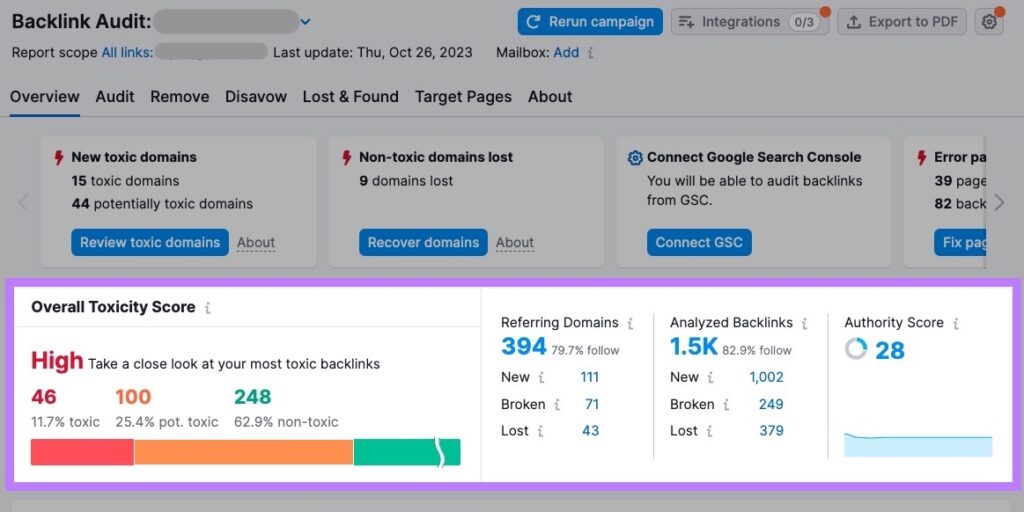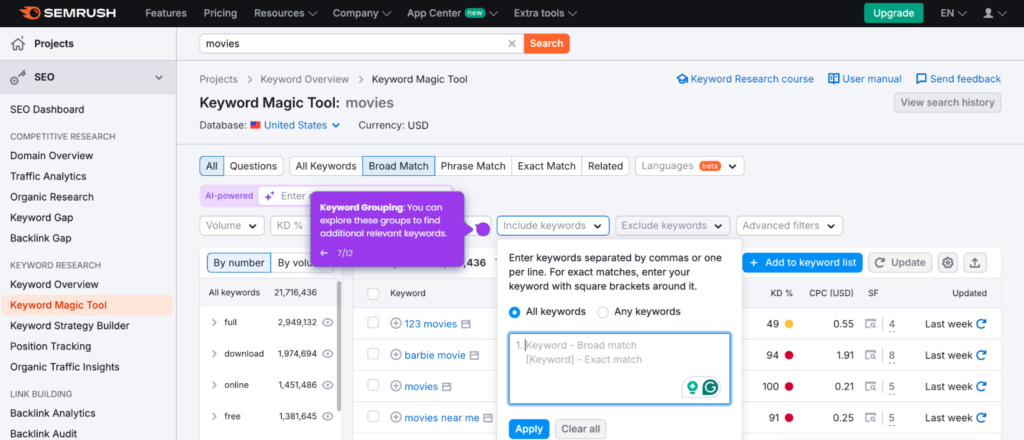Backlinks are important for your website’s ranking. They help search engines decide how good your site is. However, not all backlinks are good. Some can harm your site’s reputation. These are called toxic backlinks. In this article, we will show you how to find toxic backlinks using Semrush.
What is a Toxic Backlink?
A toxic backlink is a link that can harm your website’s SEO. It can come from low-quality or spammy websites. These links may lead to penalties from search engines. This can lower your site’s ranking. Here are some common types of toxic backlinks:
- Links from spammy sites
- Links from unrelated content
- Links from link farms
- Links with manipulative anchor text
Why Are Toxic Backlinks Bad?
Toxic backlinks can hurt your website in many ways. Here are some reasons why they are bad:
- Lower search engine rankings
- Poor website reputation
- Loss of organic traffic
- Potential penalties from search engines
How to Identify Toxic Backlinks in Semrush
Semrush is a powerful tool. It helps you analyze your backlinks. Follow these steps to find toxic backlinks:
Step 1: Create A Semrush Account
If you don’t have a Semrush account, create one. Visit the Semrush website and sign up. You can use a free trial to start.
Step 2: Go To The Backlink Analytics Tool
After logging in, find the “Backlink Analytics” tool. You can find it in the left sidebar. Click on it to open the tool.
Step 3: Enter Your Domain
Type your website’s domain name into the search bar. Click the “Search” button. This will show you a list of your backlinks.
Step 4: Review The Backlink List
Look at the backlinks listed on the page. Semrush will show you details like:
- Domain Authority (DA)
- Number of referring domains
- Anchor text used
Step 5: Analyze The Toxicity Score
Semrush provides a toxicity score for each backlink. This score shows how harmful a backlink might be. A high score indicates a toxic backlink. Pay close attention to these scores.
Understanding the Toxicity Score
The toxicity score ranges from 0 to 100. Here’s what the scores mean:
| Toxicity Score | Meaning |
|---|---|
| 0-30 | Low risk – generally safe |
| 31-70 | Moderate risk – review these links |
| 71-100 | High risk – consider removing these links |
Step 6: Check Referring Domains
Click on the referring domains to see where the backlinks come from. Look for the following:
- Low Domain Authority (DA)
- Spammy content
- Unrelated topics
Step 7: Export Your Data
You can export your backlink data for further analysis. Click on the “Export” button. Choose your preferred format, like CSV or Excel. This helps you organize your findings.
What to Do with Toxic Backlinks?
After identifying toxic backlinks, you have options:
- Contact the website owner to request removal.
- Disavow the links using Google’s Disavow Tool.
- Monitor your backlinks regularly.
How To Disavow Toxic Backlinks
Disavowing a backlink tells Google to ignore it. Here’s how to do it:
- Make a list of toxic backlinks.
- Open a Notepad or text editor.
- Write “#” at the top of the file.
- List each toxic link on a new line.
Save the file as disavow.txt. Then, go to Google Search Console. Upload your disavow file. This tells Google to ignore these links.
Regularly Monitor Your Backlinks
It is important to keep an eye on your backlinks. Set a schedule to check your backlinks every few months. This will help you catch any new toxic links quickly.

Credit: www.semrush.com
Frequently Asked Questions
How Can I Identify Toxic Backlinks?
Use SEMrush’s Backlink Audit tool to analyze your backlink profile for harmful links.
What Are The Signs Of Toxic Backlinks?
Toxic backlinks often come from spammy sites, have low domain authority, or use irrelevant anchor texts.
Why Are Toxic Backlinks Harmful?
They can negatively impact your website’s ranking and lead to penalties from search engines like Google.
How Does Semrush Help With Backlinks?
SEMrush provides insights and metrics to evaluate the quality of your backlinks, helping you spot toxic ones.
Conclusion
Finding toxic backlinks is essential for your website’s health. Using Semrush makes this task easier. Follow the steps outlined in this article. Regularly monitor your backlinks to maintain a strong online presence. Protect your website from potential harm by identifying and addressing toxic backlinks.
By taking these steps, you can improve your website’s SEO and ensure it ranks well. Remember, a clean backlink profile is key to online success.

Credit: m.youtube.com
Additional Resources
For further reading, check out these resources:



